First, congratulations on making your first batch of kombucha. Now that the primary fermentation of your kombucha is finished, your kombucha is ready. The steps from here are pretty straightforward, so we’ll have you up and running in no time.
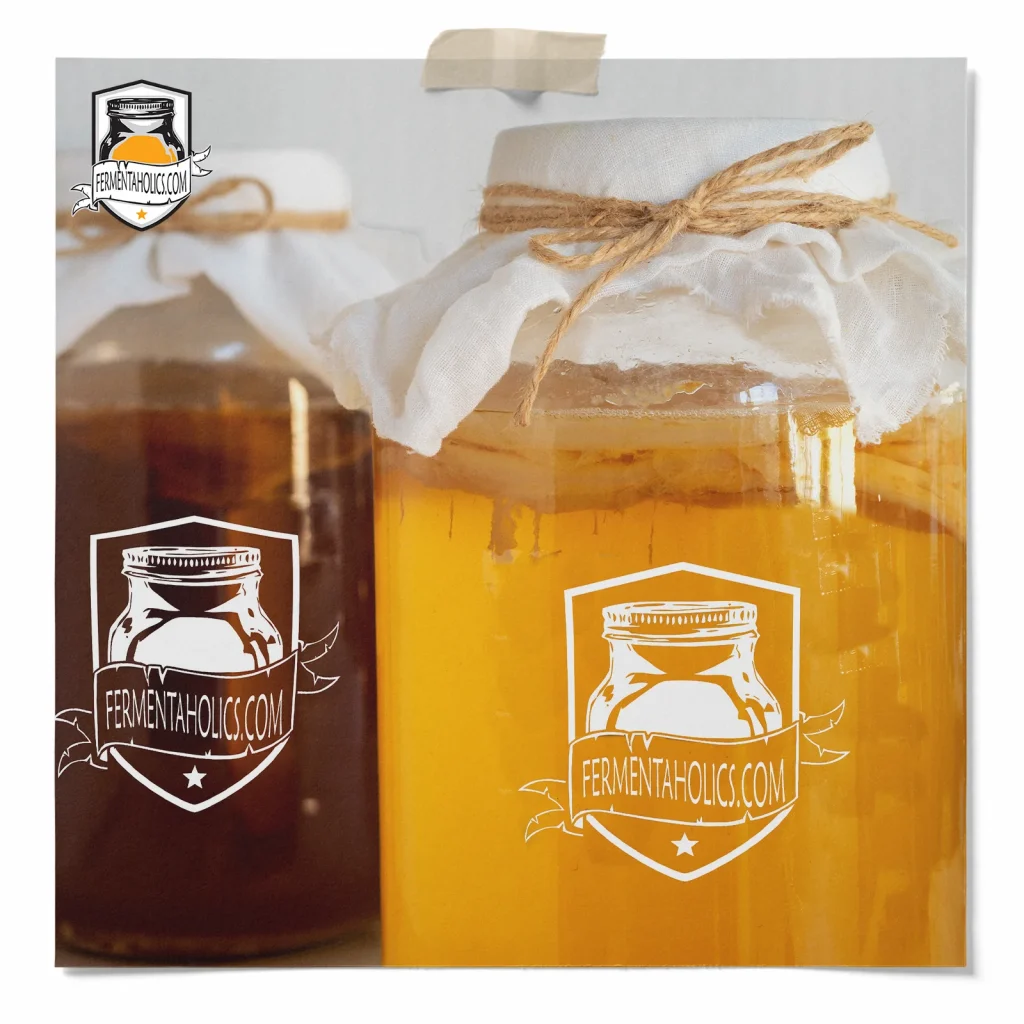
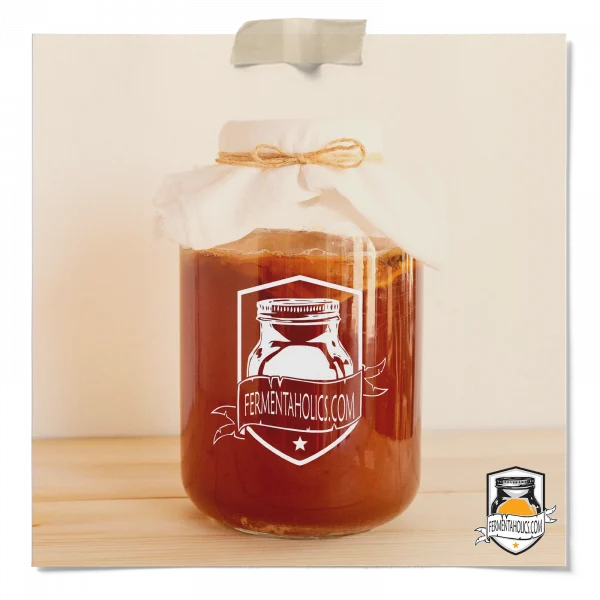
To determine the amount of starter tea that you will need to split off to start the next batch, you first need to think ahead by answering these two questions:
In order to determine the amount of starter tea you need to reserve, you need to know your next batch size. Each batch of kombucha needs to start with 10% of the batch volume as kombucha starter tea, or a 9:1 ratio. If you’re looking for a hard and fast rule, you need 12 fl oz of kombucha starter tea per gallon. For a deeper dive into this subject, you can find all kombucha measurements in detail in our post about kombucha brewing ratios.
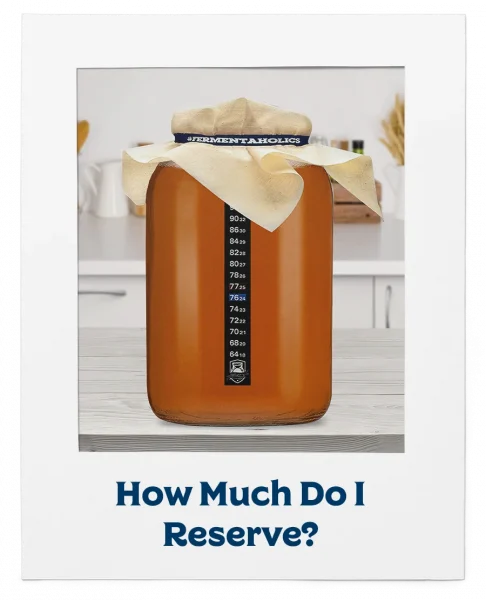
So if your next batch is going to be a gallon, you will reserve a 12 oz of starter tea and a SCOBY. You can use any SCOBY you have available with the starter tea. You can include either the SCOBY that recently formed on the batch or the one you used to start the previous batch. There isn’t a wrong answer here.
Now that you know your next brew will be a gallon and you need 12 oz of starter tea, you need to ask yourself, “How long until I get around to making the next batch?” If this is more than a week or so out, you will need to pull a little more than 12 oz of starter tea to account for evaporation. The goal here is to make sure that when it’s time to brew, you still have 12 oz of starter tea on hand to use in our gallon batch.
With the amount of starter tea decided, here’s how to reserve it from your finished kombucha. First, gather a few essential supplies:
Once you have gathered the necessary supplies, follow these steps to reserve your SCOBY and the starter tea from the finished batch of kombucha:
Remove the SCOBY from the finished batch of kombucha using clean hands, a spoon, tongs, or any utensil you have on hand. Place it in your separate container.
Select and clean a container that is large enough to hold enough liquid for your next batch of kombucha.
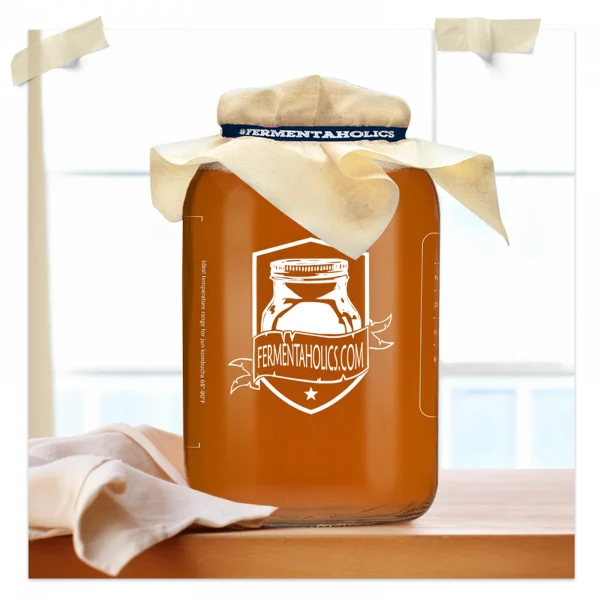
Measure out the amount of starter tea needed for your next batch based on the batch size and the time until you brew (12 fl oz per gallon). Remember to account for evaporation. From a practical approach, you can pour from the fermenting jar, use a stainless spigot if available, or scoop out the needed starter tea with a clean measuring cup or something similar. This starter tea and SCOBY will be used to kickstart fermentation in your next batch.
Now that you’ve placed the starter tea and SCOBY in a separate container, cover it with a breathable cloth and secure it with a rubber band. You can now store this at room temperature until you are ready to make your next batch. When you are ready to brew again, use this as your SCOBY and follow the same recipe you used to make your previous batch of kombucha; found here – How to Make Kombucha.

Alternatively, if you plan to bottle your kombucha today, which will empty the primary fermentation vessel, you can return the SCOBY and starter tea back to the main fermentation vessel after you’ve finished bottling the kombucha. You can find detailed instructions on bottling in our post How to Bottle Kombucha.
Once the SCOBY and starter are back in the main brewing vessel, cover it with your breathable cloth and rubber band and store it at room temperature until you are ready to brew. Just follow the same recipe, and this will be your SCOBY for the next batch.
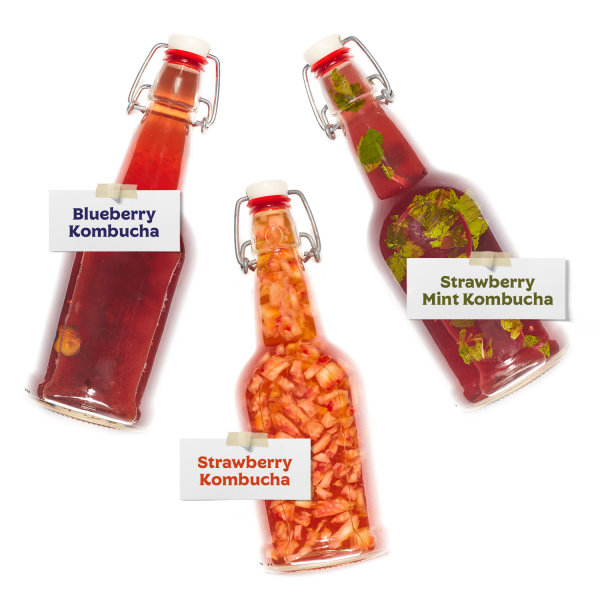
Now that you have your kombucha starter tea and SCOBY set aside, now comes the fun part. You can now shift your focus on drinking the remaining kombucha.
It’s time to decide on the style of kombucha we want to create, considering factors like carbonation and flavoring. After completing a batch, you should ask yourself a few key questions to determine your path forward.
Do I want to make carbonated or still kombucha? If you prefer carbonated kombucha, a secondary round of fermentation will be needed. If you want it still without carbonation, this step can be skipped.
Am I aiming for classic, unflavored kombucha, or do I want to get creative with flavors? Classic kombucha refers to the original, unflavored kombucha. When kombucha is finished, you can choose to leave it as is or add whatever flavors we want.
You can relax now; the quiz is over. From here, there are only four possible answers, so you should now know what style of kombucha you are looking to make. Below, you’ll find links with step-by-step instructions for each option:
If you want still kombucha, then either one of the posts below is what you’ll need. If you’re looking to keep it simple with something unflavored and all about that clean, tangy brew on its own, check out our post on How to Make Classic Still Kombucha. If you’re into still but want to mix it up a bit, go for How to Make Still Flavored Kombucha, where you can get creative and flavor it any way you like—think infusions with herbs, fruits, or botanicals. Still no bubbles, just extra character. Same smooth sip, without the fizz.
If you’re into fizzy kombucha, then one of the posts below is what you’re after. If you like to keep things classic with that tangy, naturally carbonated brew just as it is, check out our post on How to Make Classic Kombucha—pure, bubbly, and straight-up traditional. If you’re looking for both fizz and want to add some flavor, go for How to Bottle Your Kombucha, where you can infuse your flavored carbonated kombucha with fruits, herbs, or botanicals for a little extra personality. Same vibrant brew, just with that natural sparkle.
$46.99 Original price was: $46.99.$44.99Current price is: $44.99.
In stock
$42.99 Original price was: $42.99.$40.99Current price is: $40.99.
In stock
$42.99 Original price was: $42.99.$40.99Current price is: $40.99.
$49.99 Original price was: $49.99.$41.95Current price is: $41.95.
In stock
$58.99 Original price was: $58.99.$57.99Current price is: $57.99.
In stock
$17.99 Original price was: $17.99.$16.99Current price is: $16.99.
In stock
